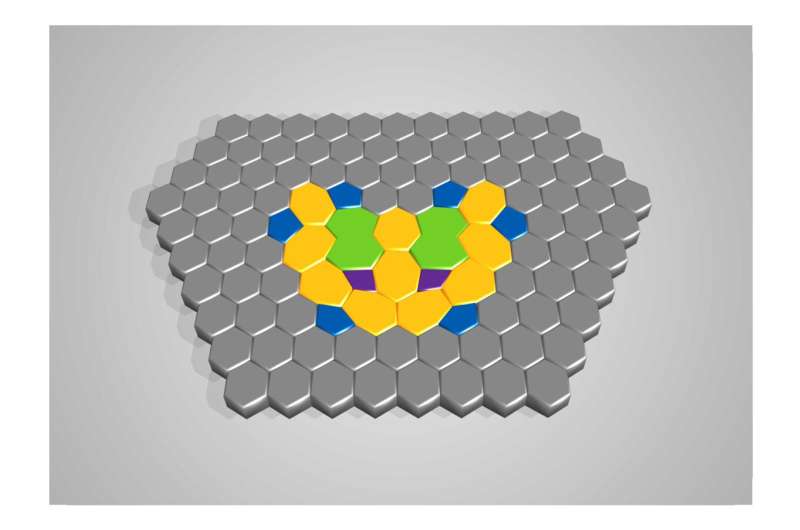Physicists solve riddle of two-dimensional quasicrystal formation from metal oxides

The structure of two-dimensional titanium oxide breaks up at high temperatures when one adds barium; instead of regular hexagons, rings of four, seven and ten atoms are created that order aperiodically.
A team at Martin Luther University Halle-Wittenberg (MLU) made this discovery in collaboration with researchers from the Max Planck Institute (MPI) for Microstructure Physics, the Université Grenoble Alpes and the National Institute of Standards and Technology (Gaithersburg, U.S.), thereby solving the riddle of two-dimensional quasicrystal formation from metal oxides. Their findings have been published in Nature Communications.
Hexagons are frequently found in nature. The best-known example is honeycomb, but graphene or various metal oxides, such as titanium oxide, also form this structure. “Hexagons are an ideal pattern for periodic arrangements,” explains Dr. Stefan Förster, researcher in the Surface and Interface Physics group at MLU’s Institute of Physics. “They fit together so perfectly that there are no gaps.”
In 2013, this group made an astonishing discovery upon depositing an ultrathin layer containing titanium oxide and barium on a platinum substrate and heating it to around 1,000 degrees centigrade in ultra-high vacuum. The atoms arranged themselves into triangles, squares and rhombuses that grouped in even larger symmetrical shapes with twelve edges. A structure with 12-fold rotational symmetry was created, instead of the expected 6-fold periodicity.
According to Förster, “Quasicrystals were created that have an aperiodic structure. This structure is made of basic atomic clusters that are highly ordered, even if the systematics behind this ordering is difficult for the observer to discern.” The physicists from Halle were the first worldwide to demonstrate the formation of two-dimensional quasicrystals in metal oxides.
The mechanisms underlying the formation of such quasicrystals has remained puzzling since their discovery. The physicists at MLU have now solved this riddle in collaboration with researchers from the Max Planck Institute for Microstructure Physics Halle, the Université Grenoble Alpes and the National Institute of Standards and Technology (Gaithersburg, U.S.).
Using elaborate experiments, energetic calculations and high-resolution microscopy, they have shown that high temperatures and the presence of barium create a network of titanium and oxygen rings with four, seven and ten atoms respectively. “The barium both breaks up the atomic rings and stabilizes them,” explains Förster, who heads the joint project.
“One barium atom is embedded in a ring of seven, two in a ring of ten.” This is possible because the barium atoms interact electrostatically with the platinum support, but do not form a chemical bond with the titanium or oxygen atoms.
With their latest discovery the researchers have done more than just clarify a fundamental question of physics. “Now that we have a better understanding of the formation mechanisms on the atomic level, we can try to fabricate such two-dimensional quasicrystals on demand in other application-relevant materials like metal oxides or graphene,” says Förster. “We are excited to learn whether this special arrangement will produce completely new and useful properties.”
More information:
Sebastian Schenk et al, 2D honeycomb transformation into dodecagonal quasicrystals driven by electrostatic forces, Nature Communications (2022). DOI: 10.1038/s41467-022-35308-z
Provided by
Martin-Luther-Universität Halle-Wittenberg
Citation:
Physicists solve riddle of two-dimensional quasicrystal formation from metal oxides (2023, January 26)
retrieved 26 January 2023
from https://phys.org/news/2023-01-physicists-riddle-two-dimensional-quasicrystal-formation.html
This document is subject to copyright. Apart from any fair dealing for the purpose of private study or research, no
part may be reproduced without the written permission. The content is provided for information purposes only.
For all the latest Science News Click Here
For the latest news and updates, follow us on Google News.

